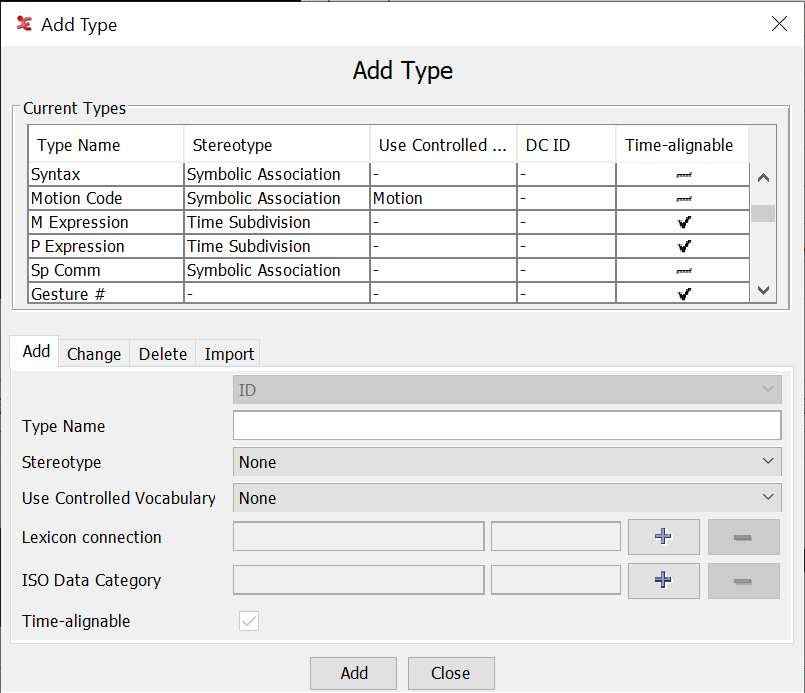Every tier is assigned to a linguistic type. The linguistic type specifies the stereotypical constraints (and, as a consequence, whether or not the tiers are time-alignable).
Information about the relationship between tiers is given in two different places: for each individual tier it is given in the dialog window (see Section 5.4.1), and for all tiers belonging to one linguistic type it is given in the window (this section), i.e.:
window: specify the parent tier of the individual tier.
window: specify the stereotypical constraints of tiers belonging to one type.
To create a linguistic type, do the following:
Click on the menu.
Either go to . In the latter case, click on the linguistic type that you want to change when the dialog window appears:

Figure 5.6. Add a linguistic type
Enter a label for the new type
Select the stereotypical constraint:
None
Time Subdivision
Included In
Subsymbolic Subdivision
Symbolic Association
Associate the new type with a Lexicon Service and Lexicon Entry Field via this option
Associate the new type with an ISO Data Category via this option
Ignore this option
Enter the following information:
Go to . Enter/change the name for the type.
Go to . Select the stereotypical constraint relevant to its tiers (see Section 5.1).
Optionally select a controlled vocabulary (see Section 5.6.7).
After you have selected a stereotypical constraint, ELAN automatically enters the correct value next to the box .
Click to save the settings; otherwise click to exit the window without saving them.